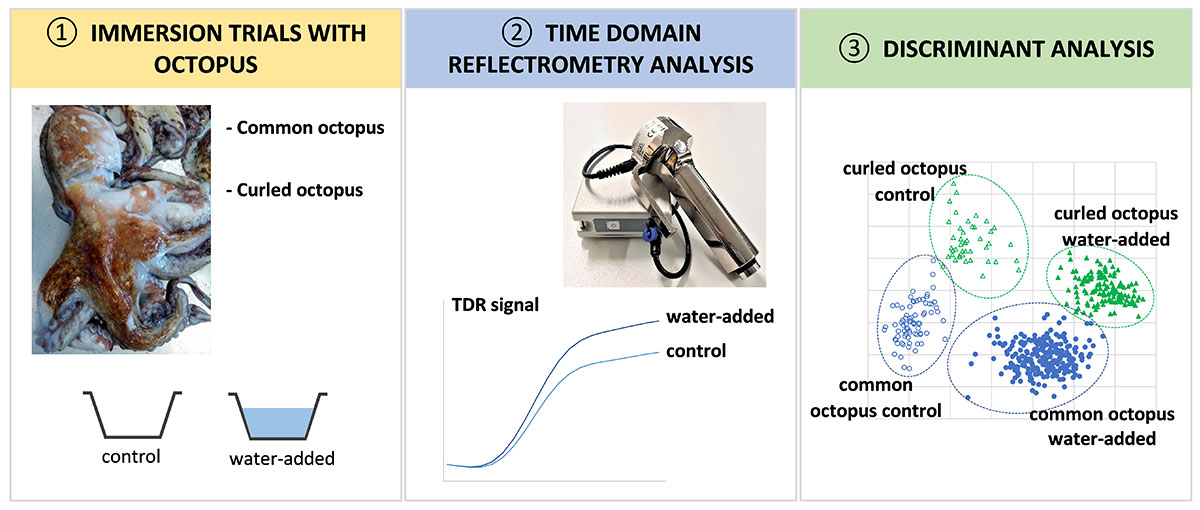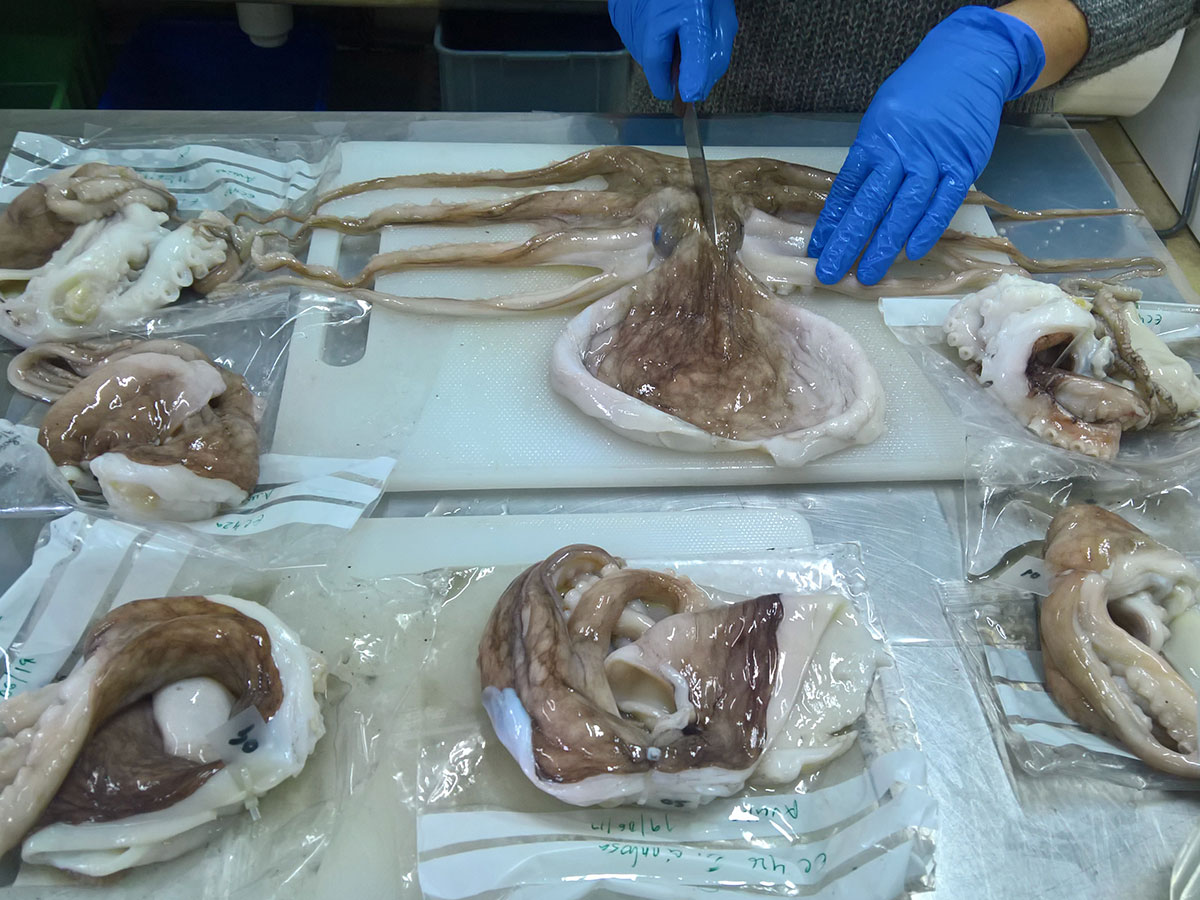SEATRACES PUBLICATION
Bárbara Teixeira, Helena Vieira, Sandra Marins and Rogério Mendes
IPMA researchers, Bárbara Teixeira, Helena Vieira, Sandra Martins and Rogério Mendes, recently published an article in the scientific journal Foods addressing the development of a rapid and nondestructive method for the detection of water addition in two octopus species (Octopus vulgaris and Eledone cirrhosa) using Time Domain Reflectometry (TDR).
This article follows previous ones by the same team related with food authenticity and specifically the control of water added to octopus using new and more convenient methods that simplify the control of this abusive practice. The study characterized the baseline levels of moisture, protein, electrical conductivity, and cooking losses of octopus for control quality purposes and compared the kinetics of water uptake in the two octopus species.
Results showed that immersion in freshwater increased the weight of O. vulgaris in ca. 32% after 32 h, and of E. cirrhosa in ca. 21% after 36 h, and cooking losses increased about 13.9% and 26.1%, respectively, clearly revealing how consumers can be misled by abusive water addition.
Changes in electrical conductivity and TDR curves were linked with the increasing incorporation of water and dilution effect of salts from octopus muscle. The researchers further combined TDR technology and linear discriminant analysis to detect added water in octopus. The classification model developed was cross-validated and 98.6% of samples showed a positive correct classification, thus, allowing to conclude that the method can be used to proof the authenticity of octopus (O. vulgaris and E. cirrhosa) or to detect fraudulent practices regarding added water.

Abstract:
Consumer expectations regarding the quality of octopus are often frustrated and dissatisfaction is frequent, namely due to the excessive reduction in weight after cooking. Therefore, a rapid and non-destructive method based in time domain reflectometry (TDR) was developed for the control of water added to octopus (Octopus vulgaris and Eledone cirrhosa). O. vulgaris had significant higher values of moisture content, moisture/protein ratio, and cooking loss than E. cirrhosa. Immersion in freshwater increased the weight of O. vulgaris in ca. 32% after 32 h, and of E. cirrhosa in ca. 21% after 36 h, and cooking losses increased about 13.9% and 26.1%, respectively.

The results reveal how consumers can be misled by abusive water addition. Changes in electrical conductivity and TDR curves were linked with the increasing incorporation of water and dilution effect of salts from octopus muscle. TDR technology and linear discriminant analysis were combined to detect added water in octopus. The classification model developed was cross-validated and 98.6% of samples were
correctly classified. The method can be used to proof the authenticity of octopus (O. vulgaris and E. cirrhosa) or to detect fraudulent practices regarding added water.
Journal: Foods